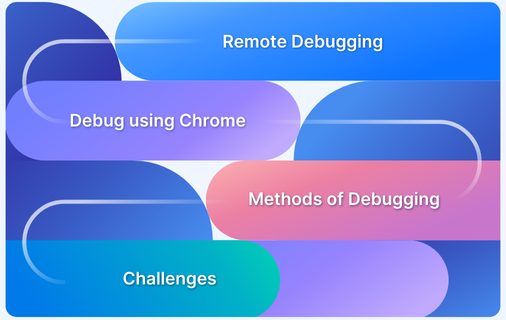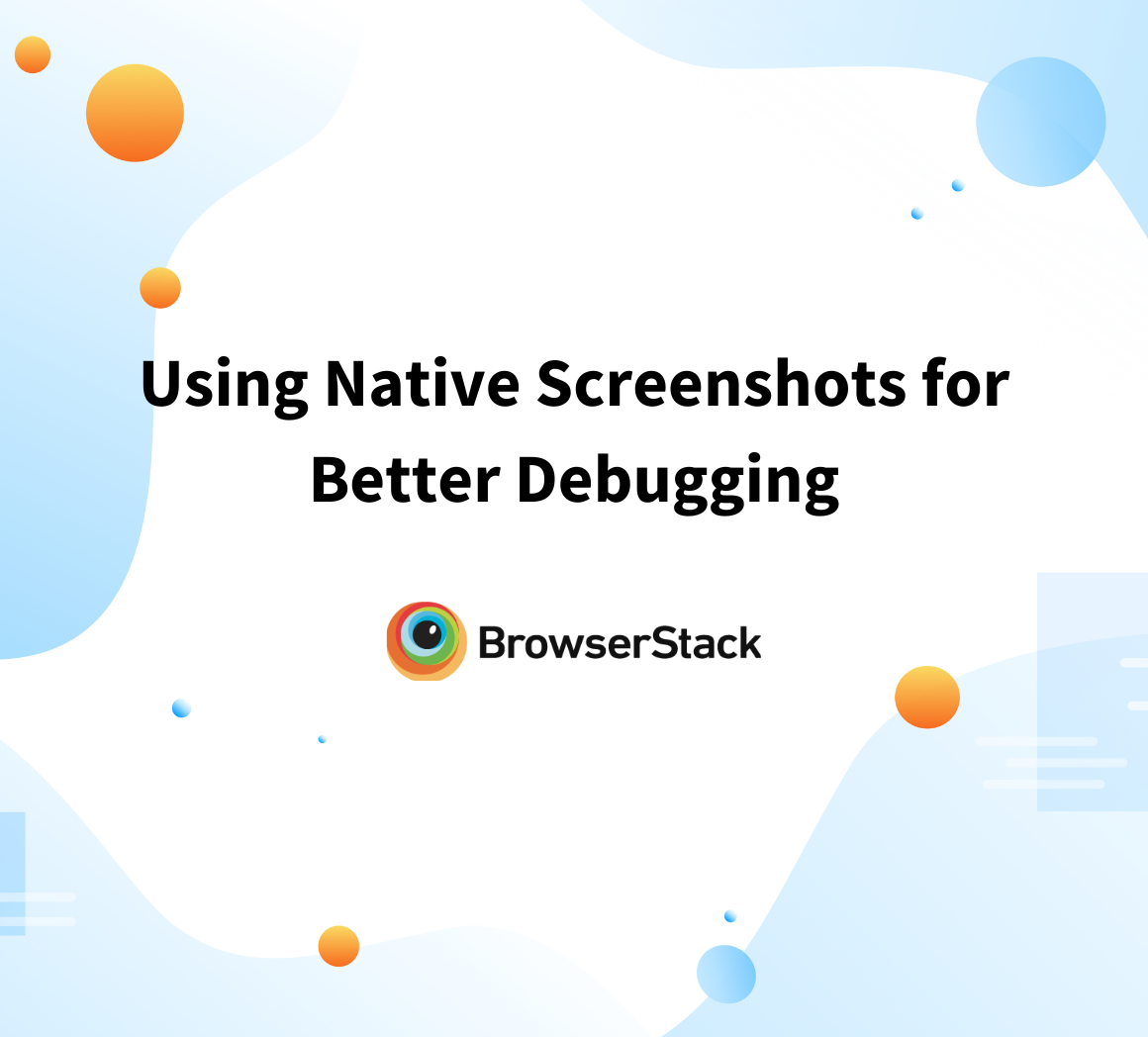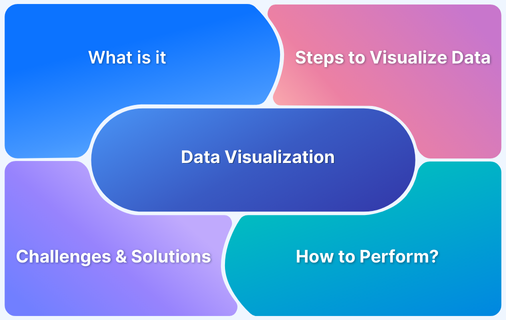Best PHP Debugging Tools you Should know in 2024
By Pawan Kumar, Community Contributor - September 3, 2024
PHP, or Hypertext Preprocessor, is a widely used open-source scripting language especially suited for web development. It powers a significant portion of the internet, with millions of websites relying on it for server-side scripting. However, like any programming language, PHP has its challenges, mostly regarding debugging.
Errors, bugs, and issues are inevitable in any development process, and efficiently debugging PHP code is essential for building reliable and robust applications.
Why use PHP Debugging Tools?
Debugging is the process of finding, analyzing, and removing errors from software. In PHP, debugging can be challenging due to the language’s flexibility and the dynamic nature of web applications. Manually identifying errors can be time-consuming and prone to oversight.
PHP debugging tools are designed to simplify this process, providing developers with powerful features to pinpoint and resolve issues quickly.
PHP debugging tools accelerate the development process and also ensure that the final product is free from bugs and performs efficiently. These tools provide functionalities from displaying error messages and stack traces to offering insights into memory usage and performance bottlenecks.
Best PHP Debugging Tools
Efficient debugging is the backbone of robust PHP development. Here is a curated list of the best tools to help you identify and resolve issues quickly, ensuring your code runs flawlessly.
1. BrowserStack
BrowserStack is a cloud-based testing platform that enables developers to test their web applications across various browsers, operating systems, and devices. While BrowserStack is primarily known for cross-browser testing, it also offers powerful debugging capabilities that are particularly useful for PHP developers.
With BrowserStack Automate, you can easily debug your failed test cases using various logging options. These include text logs, visual logs, video logs, Selenium logs, console logs, and network logs—all accessible directly from the Automate dashboard. It also offers network logs, screenshots, and interactive sessions.
Each of these logs provides different insights into your tests, helping you pinpoint issues quickly and efficiently.
Key Features
- Cross Browser Testing: Test your PHP application across different browsers to ensure compatibility and performance consistency.
- Automated Testing: Integrates with popular automation frameworks, allowing you to run automated tests and catch bugs early.
- Live Debugging: Real-time debugging on actual devices and browsers, helping you identify and fix issues on the spot.
- Comprehensive Debugging Logs: Access detailed logs—text, visual, video, and more—to effectively debug and troubleshoot issues across different stages of your test execution.
- Screenshots and Video Recording: Capture screenshots and record videos of your testing sessions to document and analyze issues.
- Local Testing: Test your PHP application in a local environment before deploying it live, ensuring everything works as expected.
Read More: How to debug website on mobile Chrome?
How to Install?
BrowserStack is a cloud-based platform, so there’s no need for a traditional installation. Simply sign up for an account on the BrowserStack website, and you’ll gain access to their suite of testing and debugging tools. For more setup details, refer here.
BrowserStack simplifies automated PHP debugging with its user-friendly automation features. To get started:
- Open your browserstack.yml file
- Set the debug capability to true
- Run your tests and view screenshots on your dashboard
The Automate dashboard provides immediate access to comprehensive debugging information, with text, visual, video, Selenium, and Appium logs enabled by default.
Why is BrowserStack the Best PHP Debug Tool?
BrowserStack Automate is one of the best PHP debugging tools due to its comprehensive testing environment, real-time debugging capabilities, and support for many devices and browsers.
Its cloud-based nature ensures you can access the tool from anywhere, making it a flexible and powerful choice for PHP developers looking to ensure their applications work flawlessly across different platforms.
BrowserStack Automate offers more than comprehensive logs, such as Text, Visual, and Video. It ensures effective debugging by allowing you to pause tests at breakpoints and manually resolve issues. With regular test summaries and detailed reports, you can efficiently track and fix bugs, making BrowserStack the ideal choice for thorough and accurate debugging.
2. Kint
Kint is a powerful PHP debugging tool that simplifies dumping and inspecting variables during development. Compared to traditional PHP functions like var_dump() or print_r(), it provides a more readable and informative output, making it easier for developers to understand the state of their application at any given time.
Key Features
- Enhanced Variable Output: Kint provides a clean and organized output for variables, making it easier to inspect complex arrays, objects, and other data structures.
- Interactive CLI Mode: Kint offers an interactive mode for the command line, allowing developers to debug their PHP scripts directly from the terminal.
- Contextual Information: Displays the file, line number, and context of where the debug information was generated.
- Customizable: Developers can configure Kint to display output in multiple formats, including plain text, HTML, and JSON.
How to Install?
To install Kint, you can use Composer, the PHP package manager. Run the below command in your project’s root directory:
Composer require kint-php/kint
Once installed, you can use Kint in your PHP scripts by calling its d() or dd() functions to output debug information.
Why is Kint the Best PHP Debug Tool?
Kint excels as a PHP debugging tool due to its ability to provide detailed and human-readable outputs. It streamlines the debugging process by presenting complex data structures in an organized manner, allowing developers to quickly identify issues. Its customization options and interactive CLI mode make it a versatile tool for both beginners and experienced PHP developers.
Error Reporting
Error reporting is a crucial aspect of PHP debugging. PHP provides built-in error reporting mechanisms that allow developers to control how errors, warnings, and notices are handled and displayed. By configuring error reporting settings, developers can ensure they are aware of potential issues during the development process.
PHP’s error reporting levels include:
- E_ERROR: Fatal run-time errors that cannot be recovered from.
- E_WARNING: Run-time warnings that do not halt script execution.
- E_NOTICE: Notices about potential issues that do not stop the script.
- E_STRICT: Encourages best coding practices by suggesting changes.
To enable comprehensive error reporting in PHP, you can configure the php.ini file or include the following code in your scripts:
error_reporting(E_ALL); ini_set('display_errors', 1);
This ensures that all errors, warnings, and notices are displayed, making it easier to debug and fix issues during development.
3. Krumo
Krumo is a PHP debugging tool that replaces traditional print_r() and var_dump() functions. It presents data in a tree-like structure, making it easier to explore and understand complex arrays and objects.
Key Features
- Tree-Style Output: Krumo displays variables in a hierarchical tree structure, which makes it easier to navigate and inspect large data sets.
- Interactive UI: The tool allows you to expand and collapse different levels of the tree, providing a more interactive debugging experience.
- Customizable Output: Krumo can be customized to display information in different formats, such as HTML or plain text.
How to Install?
Krumo can be installed by downloading the package from its official repository and including it in your PHP project. You can use Krumo by calling its functions, like krump (), to output debug information.
Why is Krumo the Best PHP Debug Tool?
Krumo’s ability to present data in an organized, tree-like structure makes it an excellent choice for developers who frequently work with complex arrays and objects. Its interactive UI enhances the debugging experience, allowing developers to quickly drill down into data and identify issues.
Read More: Data visualization for better debugging
4. PHP DebugBar
PHP DebugBar is a versatile debugging tool that integrates seamlessly with PHP applications. It provides a real-time debugging interface that displays information about the application’s performance, executed queries, and much more.
Key Features
- Real-Time Debugging: PHP DebugBar displays real-time information about your application, including database queries, memory usage, and request timings.
- Custom Collectors: You can extend PHP DebugBar by creating custom collectors to gather specific data points during debugging.
- Integration with Frameworks: PHP DebugBar integrates easily with popular PHP frameworks like Laravel and Symfony.
How to Install?
You can install PHP DebugBar using Composer:
composer require maximebf/debugbar
Once installed, you can integrate it with your PHP application and start using its debugging interface.
Why is PHP DebugBar the Best PHP Debug Tool?
PHP DebugBar’s real-time interface and extensive data collection features make it a reliable tool for developers looking to monitor their application’s performance and debug issues as they arise. Its ability to integrate with popular frameworks further enhances its utility.
5. Pinba
Pinba is a real-time monitoring and debugging tool for PHP applications. It acts as a statistics server, collecting and aggregating data from your PHP scripts to help you analyze performance bottlenecks and optimize your code.
Key Features
- Real-Time Monitoring: Pinba provides real-time statistics about your PHP scripts, including execution time, memory usage, and more.
- Detailed Analytics: Offers detailed insights into your application’s performance, helping you identify and resolve bottlenecks.
- Integration with MySQL: Pinba stores data in a MySQL database, allowing you to query and analyze it using familiar tools.
How to Install?
Pinba requires a server-side setup, including installing the Pinba server and PHP extension. The official Pinba website provides detailed installation instructions.
Why is Pinba the Best PHP Debug Tool?
Pinba’s real-time monitoring capabilities and detailed analytics make it an invaluable tool for developers looking to optimize their PHP applications. Its integration with MySQL allows for powerful data analysis, making it easier to identify performance issues and improve code efficiency.
Read More: How to perform remote debugging in Chrome
6. Xdebug
Xdebug is one of the most popular and powerful PHP debugging tools available. It provides features to improve the debugging experience, including stack traces, code coverage analysis, and remote debugging capabilities.
Key Features
- Stack Traces: Xdebug provides detailed stack traces for errors, helping you trace the origin of issues in your code.
- Code Coverage: Analyze your code coverage to ensure that all parts of your application are adequately tested.
- Remote Debugging: Xdebug supports remote debugging, allowing you to debug PHP applications on a remote server.
- Profiling: Xdebug can generate profiling data to help you identify performance bottlenecks in your code.
How to Install?
Xdebug can be installed via PECL or by downloading and compiling it from the source. Once installed, you must configure your php.ini file to enable Xdebug’s features.
Why is Xdebug the Best PHP Debug Tool?
Xdebug’s comprehensive feature set makes it a go-to choice for PHP developers. Its ability to provide detailed stack traces, code coverage analysis, and profiling data gives developers deep insights into their applications. Xdebug is especially valuable for those working on complex projects, where understanding execution flow and identifying performance bottlenecks is crucial. Its support for remote debugging also makes it ideal for teams working in distributed environments.
Read More: Best practices for debugging website issues
7. Whoops
Whoops is a PHP error handler that offers a more user-friendly and visually appealing way to handle and display errors. It is prevalent in development environments where having a clear and informative error page can significantly speed up debugging.
Key Features
- Beautiful Error Pages: Whoops generates error pages that are not only informative but also visually structured, making it easier to understand the nature of the error.
- Stack Trace with Code Context: It provides a stack trace and snippets of the relevant code, allowing developers to see exactly where the error occurred.
- Error Notifications: Whoops can be configured to send error notifications, helping teams stay informed about issues as they arise.
- Custom Handlers: Developers can create custom handlers to log errors, send emails, or perform other actions when an error occurs.
How to Install?
You can install Whoops using Composer:
composer require filp/whoops
Once installed, you can integrate it into your PHP application by setting it as the error handler.
Why is Whoops the Best PHP Debug Tool?
Whoops excels in providing clear and user-friendly error reporting, making it a competent tool for developers who want to quickly diagnose and fix issues. Its customizable error pages and ability to display code context make it a valuable addition to any PHP development environment.
8. PHP Profiler
A PHP profiler is a term used to profile the PHP script using different tools that help you analyze the performance of your PHP scripts. Profilers collect data about the execution of your code, including the time taken by each function or method, memory usage, and other performance metrics. This data is crucial for optimizing your application and ensuring it runs efficiently.
Key Features
Detailed Performance Metrics: PHP profilers provide detailed information about the execution time, memory usage, and other performance aspects of your code.
Function and Method Analysis: Profiler tools can show you which functions or methods consume the most resources, helping you target areas for optimization.
Graphical Reports: Many PHP profilers offer graphical reports that make it easier to visualize performance data and identify bottlenecks.
Integration with Debugging Tools: PHP profilers can often be integrated with other tools like Xdebug, providing a comprehensive debugging and optimization environment.
How to Install?
Installation processes for PHP profilers vary depending on the tool you’re using. Xdebug, for example, has built-in profiling capabilities that can be enabled in the php.ini file.
Why is PHP Profiler the Best PHP Debug Tool?
PHP profilers are indispensable for developers focused on performance optimization. By providing detailed insights into how code executes, profilers help developers fine-tune their applications, reduce resource consumption, and improve overall efficiency. For anyone looking to build high-performance PHP applications, a profiler is a must-have tool.
Read More: How to perform online debugging of websites
9. PHP Interactive Shell
The PHP Interactive Shell, also known as PHP CLI (Command Line Interface), is a competent tool that allows developers to execute PHP code interactively from the command line. It is particularly useful for testing small code snippets, experimenting with functions, or performing quick calculations without writing and running a full script.
Key Features
- Real-Time Code Execution: The PHP Interactive Shell enables you to execute code and see the results immediately, making it ideal for quick testing and debugging.
- Function Exploration: Developers can test and explore PHP functions in real-time, which is especially useful when working with unfamiliar code or libraries.
- Interactive Development: The shell supports interactive development, where you can write, test, and modify code on the fly.
How to Install?
The PHP Interactive Shell is included with PHP which can be used by executing the following command in your terminal:
php -a
Once in the interactive shell, you can start typing PHP code and see the output immediately.
Why is PHP Interactive Shell the Best PHP Debug Tool?
The PHP Interactive Shell is a simple yet robust tool for developers who need to test and debug code snippets quickly. Its real-time execution and immediate feedback make it a good choice for interactive development and rapid prototyping.
10. PHP Error Log
The PHP error log is a file where PHP records errors, warnings, and notices that occur during a script’s execution. This log is an essential tool for debugging, as it provides a historical record of issues that have occurred, even if they were not displayed on the screen.
Key Features
- Persistent Error Records: The error log records all errors, warnings, and notices, making it easy to review and analyze issues after they occur.
- Configurable Logging: Developers can configure what errors are logged and where the log file is stored, allowing for a customized logging setup.
- Automated Monitoring: Error logs can be monitored automatically, with alerts to notify developers when new errors are logged.
How to Install?
The PHP error log is typically configured in the php.ini file. You can enable logging and specify the log file location with the following settings:
log_errors = On error_log = /path/to/php-error.log
Why is PHP Error Log the Best PHP Debug Tool?
The PHP error log is a fundamental tool for any PHP developer. It provides a reliable way to track and review errors during script execution, making it easier to identify and fix issues over time. By keeping a persistent record of errors, the error log helps ensure that no issue goes unnoticed.
Read More: How to start with Selenium debugging?
Conclusion
Debugging is an essential part of the PHP development process, and the right tools can make all the difference. Each tool discussed in this guide offers unique features that cater to different aspects of PHP debugging.
Choosing the best PHP debugging tool depends on your specific needs. Whether you’re looking for a comprehensive debugging solution like BrowserStack, a real-time error handler like Whoops, or a performance profiler, there’s a tool that can enhance your development workflow.
BrowserStack Automate offers PHP developers a powerful cloud-based platform for cross-browser testing and debugging. With comprehensive logs, live debugging, and automated testing, it simplifies identifying and fixing issues across multiple environments.
By integrating Automate into your development process, you can improve the quality, performance, and reliability of your PHP applications, ensuring a smoother and more efficient development experience.








